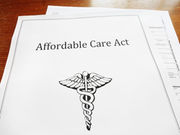Reaching the remaining uninsured may be difficult due to lack of Medicaid expansion on the state level
FRIDAY, May 27, 2016 (HealthDay News) — Uninsurance rates have decreased since the introduction of the Affordable Care Act (ACA), but reaching the remaining uninsured may prove challenging, according to a health policy brief published online May 23 in Health Affairs.
Sarah Goodell examined how uninsurance rates are changing under the ACA. Data were reviewed from multiple sources, including the National Health Interview Survey (NHIS) and Gallup-Healthways Well-Being Index.
Goodell notes that uninsurance rates decreased from 2013 to 2014. Early release of NHIS data seem promising, with 10.5 percent of the nonelderly population uninsured in 2015. Based on Gallup data, since 2010, an estimated 20 million adults have gained insurance coverage. Despite the increased penalty in 2016 for not having insurance, it may be hard to enroll the remaining uninsured adults. A significant number of the remaining nonelderly uninsured people are likely to be ineligible for Medicaid or subsidized plans. Many states with the largest number of uninsured have expressed no intention to expand Medicaid.
“While improved outreach is crucial to reaching uninsured people who are eligible for Medicaid or subsidized Marketplace insurance but have not yet taken up coverage, continued progress in reducing the ranks of the uninsured will also depend on federal and state policy changes that expand the number of people who are eligible for assistance and ensure that assistance is sufficient to make coverage affordable,” Goodell writes.
Full Text
Copyright © 2016 HealthDay. All rights reserved.








